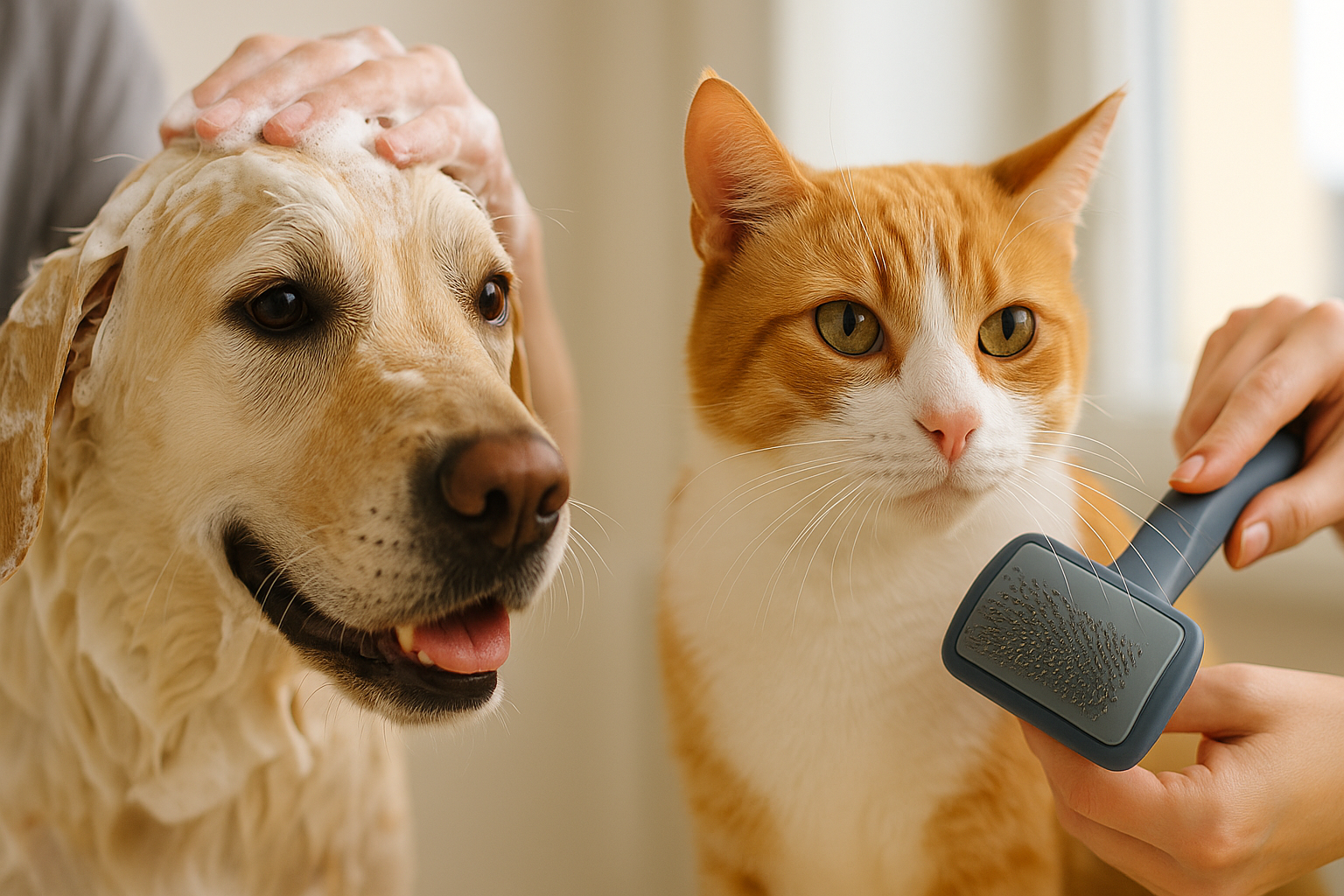Essential Hygiene: How to Keep Dogs and Cats Clean and Healthy. Think of your pet’s hygiene as armor. Every bath, every brush, every trimmed nail is a shield protecting them from discomfort, disease, and silent threats. Clean fur isn’t about vanity — it’s about health, happiness, and the bond you share.
Many guardians believe cats and dogs “handle it themselves.” They don’t. They count on you to care for what they can’t: skin, coat, teeth, ears, eyes, nails. Let’s dive into how to keep that armor strong — without stress, and with plenty of love.
Why Hygiene Matters More Than You Think
- Fewer fleas, ticks, and mites invading your pet’s world
- Healthy skin free from dermatitis and itching
- No funky odors creeping around the house
- Protection against ear infections and dental disease
- Comfort, energy, and a better life quality
Every grooming session is also a check-up. It’s when you notice the bump that wasn’t there before, the bald spot, the unusual smell. Hygiene is prevention in action.
Bathing Without Drama
Dogs 🐶
- How often? Every 15–30 days. Couch potatoes need fewer baths, mud-lovers need more.
- Products? Only dog shampoos — neutral pH, gentle formula.
- Tips: Lukewarm water, rinse thoroughly, and dry completely to avoid colds or skin issues.
Cats 🐱
- How often? Rarely. Most short-haired cats need brushing, not baths. Exceptions: heavy dirt, skin treatment, or long fur.
- Products? Cat-only shampoos, unscented and soft.
- Tips: Calm environment, no rushing. Cats hate chaos.
Brushing: More Than Beauty
Brushing isn’t just about a shiny coat — it removes dead hair, spreads natural oils, and keeps knots away.
- Dog’s short hair: 1–2 times per week
- Dog’s long hair: daily
- Cat’s short hair: 1–2 times per week
- Cat’s long hair: daily
Right tool matters: slicker brush, steel comb, or rubber glove depending on the coat.
Ears: The Silent Gate
Dirty ears = infections waiting to happen.
- Use vet-approved cleaners, never cotton swabs.
- Gently massage, wipe excess with cotton or gauze.
- Smell check: bad odor is a red flag.
Mouth: The Forgotten Frontier
Dental care is often ignored — until it’s too late. Poor hygiene doesn’t just cause bad breath, it damages heart, kidneys, and liver.
- Brush 2–3 times per week with pet toothpaste.
- Offer dental chews and safe toys.
- Annual vet cleaning may be necessary.
Nails: Small but Powerful
Overgrown nails change posture, cause pain, and even injuries.
- Trim every 3–4 weeks.
- Use pet clippers and avoid cutting the quick (that sensitive inner part).
- Unsure? Call the groomer.
Eyes: The Window Watch
Tears and secretions can cause infections if ignored.
- Clean with saline and cotton/gauze.
- Breeds with exposed eyes (Pugs, Persians) need extra care.
Environment: The Other Half of Hygiene
A clean pet in a dirty home doesn’t work.
- Wash bedding, toys, and blankets weekly.
- Clean bowls daily.
- Litter boxes (cats) and potty spots (dogs) should be spotless.
Make It a Positive Ritual
Turn hygiene into love time, not punishment.
- Reward with treats and affection.
- Start young — kittens and puppies adapt better.
- Never force. Trauma today = fear tomorrow.
Red Flags You Shouldn’t Ignore
Hygiene is when you spot what’s wrong early. Watch for:
- Red, smelly, or flaky skin
- Wounds that don’t heal
- Unusual shedding or bald patches
- Strange discharge from eyes or ears
If something feels off, trust your instinct: vet time.
Final Thought: Care Is Love in Action
Keeping your dog or cat clean isn’t about aesthetics. It’s about giving them armor against disease and the comfort they deserve. But here’s the secret: when hygiene becomes routine, it also becomes bonding. A bath, a brushing, a nail trim — each moment strengthens the invisible thread between you and your furry friend.
Clean pets are healthier pets. And healthier pets stay longer by your side. 🐾
